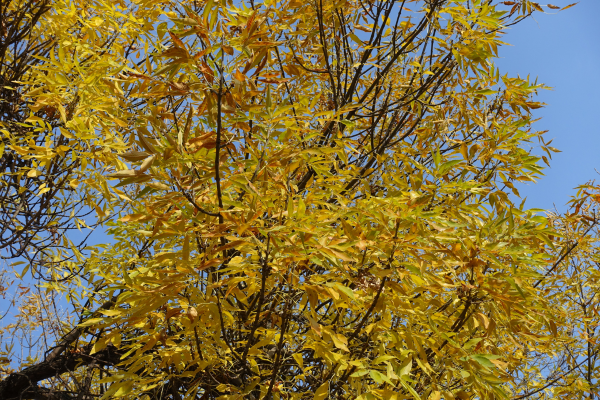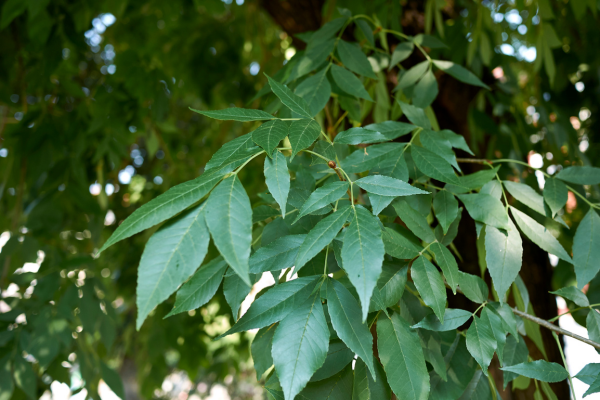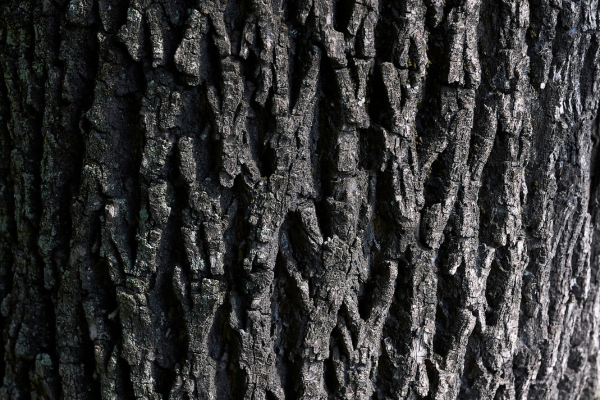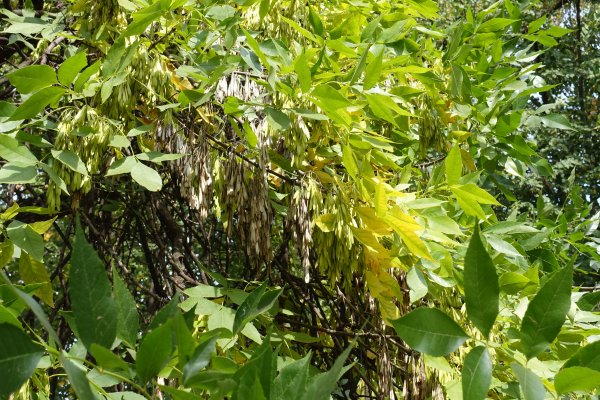Scientifc name: Fraxinus pennsylvanica
Fraxinus = The Latin word for members of the ash. The word originates from a Proto-Indo-European word meaning both "birch" and "spear", as the wood was good for making shafts.
pennsylvanica = Meaning "of Pennsylvania"
Green ash is found growing across southern and central Ontario. This tree provides a vital food source in the autumn and winter months to a wide variety of wildlife, including quail, wild turkeys, northern cardinals, finches, and small rodents, who all feed on their seeds. Their strong and stout branches are also used by various birds for roosting and nesting. Green ash is very similar in appearance to red ash but there are differences that tell them apart. One difference involves the lack of “hair” on the underside of green ash leaves. When felt, the leaves of green ash will feel smooth or “hairless” as opposed to red ash, where the underside of their leaves will have a fuzzy or “hairy” feel to them.
Green ash is a fast-growing species, reaching up to 25 meters tall. It can tolerate moist and seasonal temporarily flooded sites. While moderately shade tolerant, this tree grows better in full sun. Green ash prefers rich soil that allows its roots to grow and spread rapidly. Green ash, like all ash species, has been largely threatened across the whole of its range by the Emerald ash borer. This invasive beetle species (native to East Asia) was first discovered in Ontario in 2002. The small larvae destroy the tree by burrowing into and feeding on its inner bark. This cuts off access to valuable nutrients and water, leading to the death of the tree. For more information on the Emerald ash borer see Ontario.ca page on the Emerald Ash Borer and the video "Emerals Ash Borer" from NaturalResourcesCanada.
The wood from green ash is hard, tough, and relatively straight grained, making it perfect for a variety of products from furniture to canoe paddles. The wood also has a high shock resistance which allows it to be used for more specialty products such as baseball bats, softball bats, electric guitars, and tool handles. Indigenous people used different parts of the green ash tree for medicine, such as using the inner bark in tea to treat stomach cramps.
Sources:
OMNR. 2022. Ontario Ministry of Natural Resources: Ontario Tree Atlas. [online] Available: https://www.ontario.ca/page/greenred-ash
Starks, A., Hartline, T. 2017. Green Ash (Fraxinus pennsylvanica Marshall). Towson University Glen Arboretum. [online] Available: https://wp.towson.edu/glenarboretum/home/green_ash/
University of Guelph. Guelph Arboretum: Green Ash - Fraxinus pennsylvanica var. subintegerrima. [online] Available: https://arboretum.uoguelph.ca/thingstosee/trees/greenash
%20938-3611%20info%40rrca_on_ca%20rrca_on_catrees%20(400%20%C3%97%20200%20px)%20(1).jpg)


 Autumn foliage of green ash.
Autumn foliage of green ash. Green ashes have compound leaves, containing five to nine leaflets. The leaflets are oval, pointed at the tip and have a tapering base.
Green ashes have compound leaves, containing five to nine leaflets. The leaflets are oval, pointed at the tip and have a tapering base. The bark of green ash is dark, and furrowed, with narrow interconnecting ridges that form a diamond-like pattern.
The bark of green ash is dark, and furrowed, with narrow interconnecting ridges that form a diamond-like pattern.  Green ashes begin bearing seeds when they reach 10 years of age. A single seed is contained within a winged pod (called a samara) that helps the seed travel using the wind (much like that of a maple).
Green ashes begin bearing seeds when they reach 10 years of age. A single seed is contained within a winged pod (called a samara) that helps the seed travel using the wind (much like that of a maple).